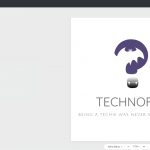Leveraging Technology to Improve HR in Your Business
In a competitive business environment, effective use of technology is key to success. Administration is one of those areas where small businesses need to tap the benefits that come with technology. In 2013, OfficeMax conducted a survey to establish the challenges that small businesses had in regards to administration. This survey revealed that small businesses use around four hours every week performing administrative tasks such as payroll processing. Cumulatively, small businesses across America waste roughly four billion hours per year on low-value administrative tasks.
Spending too much on low-value administrative tasks leaves small businesses with little time to concentrate on other important areas such as business development. Luckily, technology has come to save the situation. For example, with a time clock app with gps tasks such as employee performance tracking and payroll processing can be automated. Below are ways in which small businesses can leverage technology to improve effectiveness in HR.

Enhancing compliance
HR teams are expected to always stay on the safe side of the law. This is not a stroll on the beach as there are many laws governing labor. Further, the rules keep changing forcing the business to change several policies and procedures to remain compliant. Technology helps businesses identify the non-compliant areas in their operations.
One way of ensuring compliance in your business is proper record keeping. When auditors come knocking, you should be able to provide every document they demand. Solutions such as crowd storage give small firms a secure way of record keeping. Businesses can store records in the crowd for several years without worrying over space limitations. Furthermore, database programs have made document retrieval easy.
Effective communication
One of the most outstanding HR technologies is the Human Resource Information Systems (HRIS). This is a cloud-based system that enables employees to access HR service anywhere and anytime. For example, if an employee wants some payroll information, they can log into the system from their smartphones and access it. The systems have interactive portals through which employees can ask questions. Such solutions reduce the time spent on low-value tasks by HR managers and other employees.
Use of AI in employee recruitment
Recruiting new employees is tiring and time consuming. The HR team will have to sit in interviews for several days before finding the right candidate. However, the introduction of AI in recruitment has eliminated the need for those lengthy interviews.
The hiring software screens the candidates CVs and asks them several questions through online forms. It then matches the skills of the candidates to the job requirements and assigns each candidate a score. The HR team then interviews the top candidates to evaluate things like soft skills and culture fit. In this way, the recruitment time is reduced significantly.
Performance evaluation
One of the most significant benefits of the introduction of technology in HR processes is the ability to assess employee performance continuously. The traditional employee appraisal forms have several limitations. First, it saps the HR teams’ energy to collect data from every employee and record it in other forms. Also, they are only used at specific times of the year thus giving limited insight into performance trends throughout the year.
Performance tracking systems overcome the limitations of traditional appraisal methods by collecting data in a manner that requires little input by the employees or HR team. For example, the system can be linked with the teller system to determine how many customers a particular teller has served in a day. The system can then produce daily, weekly, and monthly performance reports.
Manufacturers can establish the cost per input and compare it to the output, but calculating the cost per employee has challenged HR teams for long. Today, this can easily be determined through the use of data-driven HR technologies. Information on input vs. output per employee is valuable to businesses when preparing their budgets. Furthermore, firms can draft strategies for reducing the cost of doing business using the information.
Besides what has been mentioned above, technology is changing the HR landscape in many other ways. These include improving employee engagement, boosting inclusivity and diversity, increasing efficiency through automation, and enhancing career development among employees.
















